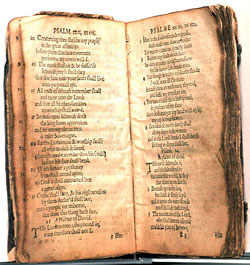Quoted from On Christian Teachings, Augustine makes clear here and throughout Book 3 that there is ambiguity in the bible and we need to decipher the form of the expression before we can actually figure out what is being stated. If we do not realize that something is in fact a sign or a metaphor for something else, that is a problem. As Augustine states, " someone who attends to and worships a things which is meaningful but remains unaware of its meaning is a slave to a sign" along with " the person who does not understand what a sign means, but at least understands that it is a sign, is not in fact subjected to slavery" (pg 74-75). Overall, Augustine thinks, and rightfully so, that we need to know when a sign is actually being used because they are used so much in the bible.
I think that this can relate to religious knowledge, on a larger level. Just as we should realize when a sign or metaphor is being used in the bible or Psalms, we (one who studies these texts and/or use them as part of their religion) also should be aware of the meaning of the overall texts. I do think it is important to adapt a modern outlook because things obviously change over time, but it is also crucial to understand the " intention of the writer through whom the Holy Spirit produced the part of the scripture" (87). I think this relates to the historical outlook we used for discussion on the Psalms. If we didn't think about and learn how the texts were created and meant to be read, and just made up opinions and stories of our own to go along with the words, that wouldn't be very meaningful. History adds a level of authenticity to the texts. The scriptures have certain meanings but can be read in other way that maybe produce different meanings. I don't think it is wrong to believe in anything you want to, but it is important to realize what meaning was initially intended.





